Hostile architecture and its impact on unhoused people
January 12, 2022
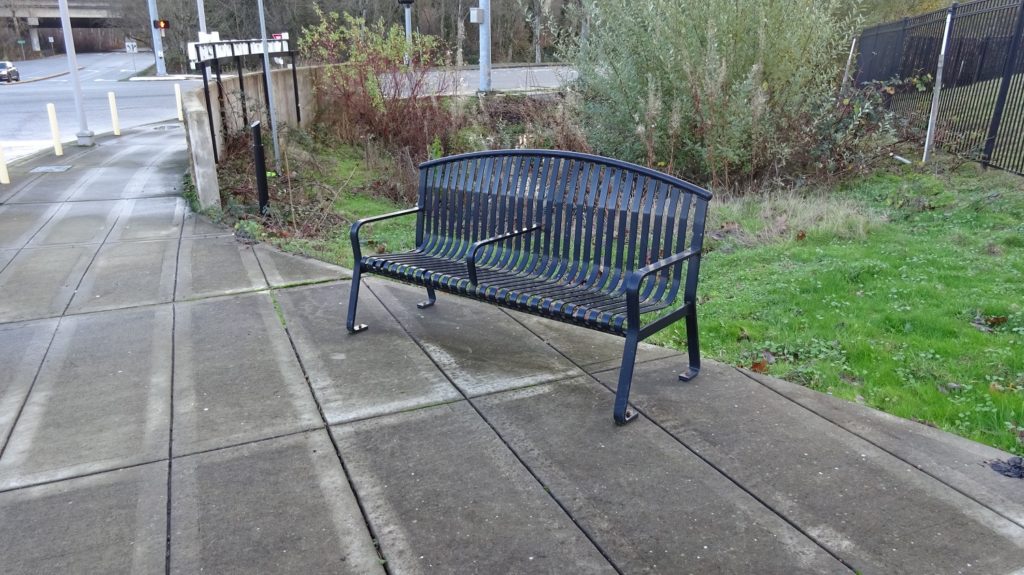
For people with homes, public spaces are often inviting environments. A bench with an armrest in the middle could be seen as an excellent addition, as it provides separation between you and a stranger.
But for someone who wants to use that bench as a place to rest, they aren't able to. This design feature is referred to as hostile architecture. Hostile architecture limits how people experiencing homelessness use public spaces and discourages them from staying in an area for too long.
Hostile architecture isn't limited to seating with barriers. It also includes the placement of boulders, spikes, high pitch sounds, or other features to stop people from lying down or camping. In New York City, a bookstore installed sprinklers to prevent people from sleeping under its awning. In Seattle, the city installed bike racks near a highway onramp after sweeping a camp in the same area. After complaints of its placement, the city removed the racks. Anti-urine paint was used on public spaces in San Francisco. This paint splashes back liquid when it hits a surface it's applied to. (Friendly reminder: a lack of public restrooms is a significant problem across the country.) Later, San Francisco officials created a Pit Stop program which provides 24-hour access to public bathrooms throughout the city and has since reduced the incidents of public defecation.
Cities install hostile architecture because of pressure from constituents who demand that public spaces and streets are clean. But if access is limited and visible poverty is frowned upon, where can someone experiencing homelessness exist?
Hostile architecture isn't solely an issue in the United States; it's present in other countries worldwide. Here are a few examples.

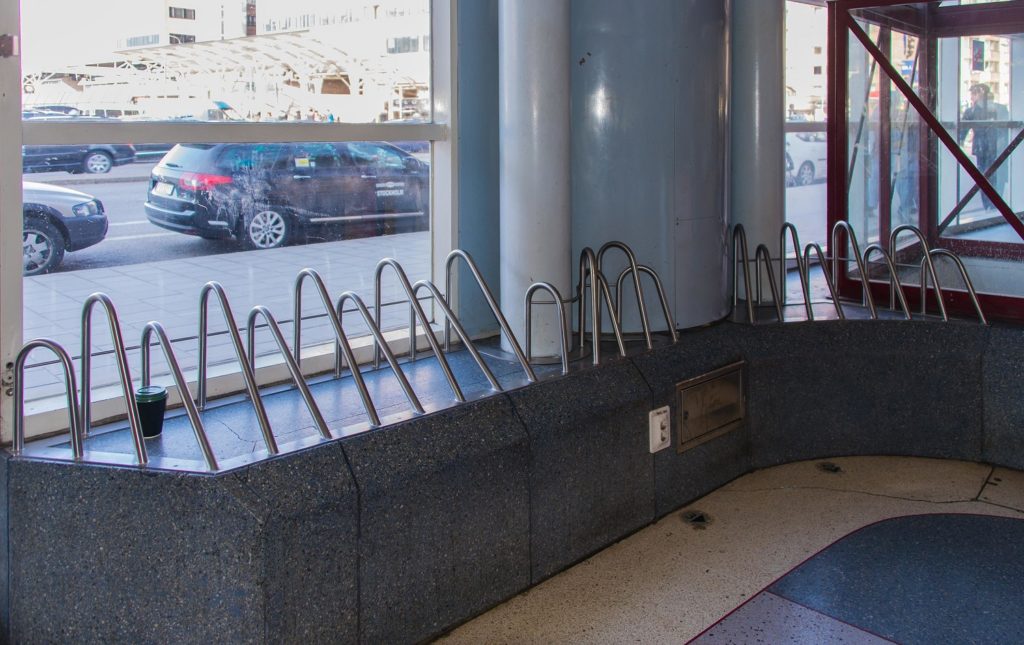
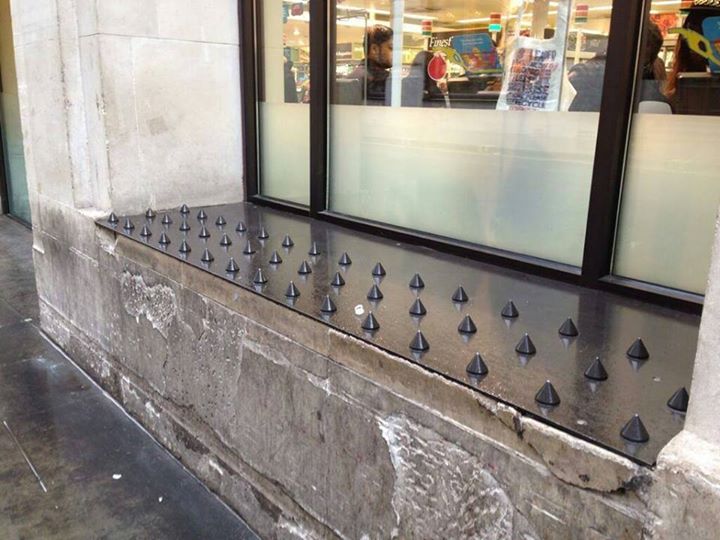
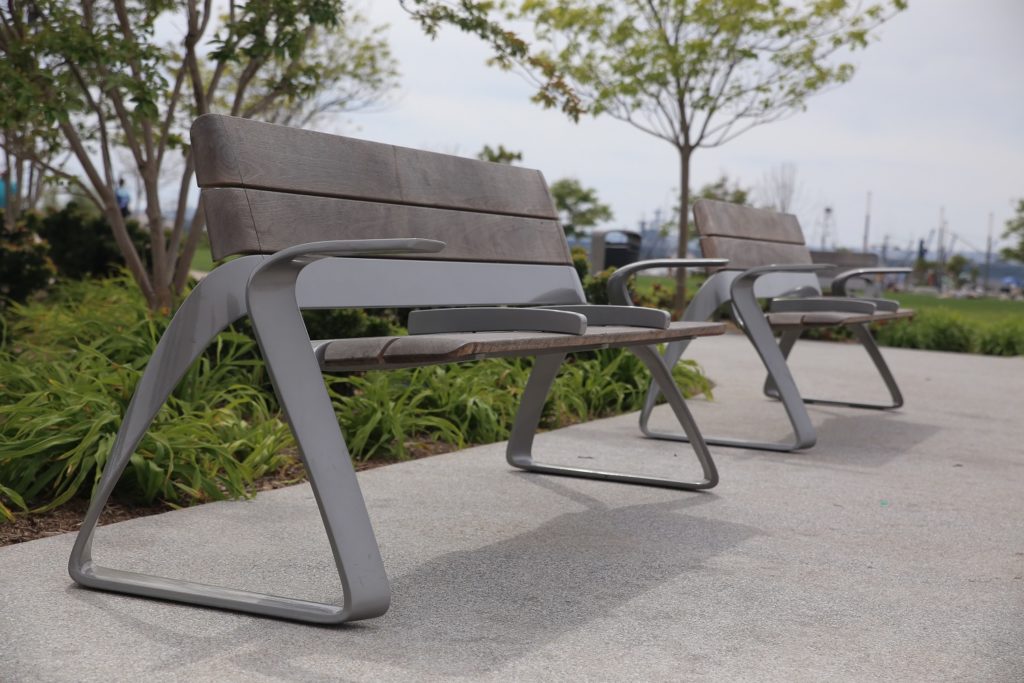
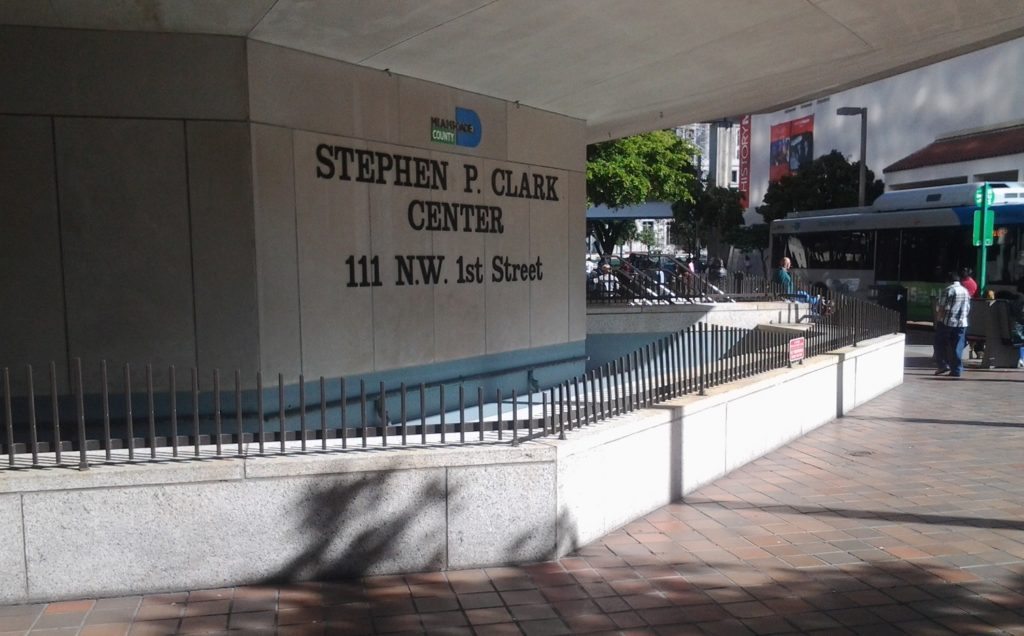
Hostile architecture isn't harmless. The design decision conveys that people who live outside are not welcome. Even when unhoused people use congregate shelters, they can't stay there all day. They must leave early in the morning and can't return until the evening — leaving extra hours available for those who aren't working. With few options, it's yet another obstacle for unhoused people as they try to survive.
People who aren't homeless are also affected, notably when seating in a public space is eliminated. If someone has mobility problems such as muscle weakness, joint pain, or neurological issues, removing a place to sit prevents them from stopping and resting when they need to.


